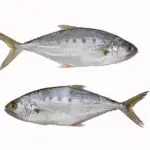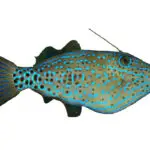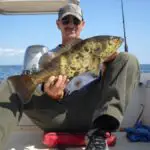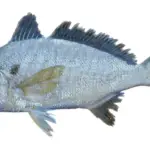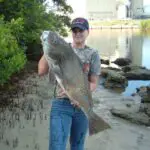Kelp Greenling are a small fish that live in the Pacific coast of North America.
These fish are a common catch in the rocky shores California and the Pacific Northwest, but are kelp greenling good to eat?
Let’s take a look into if these fish are good to eat, and how you may want to prepare some for yourself!
Table of Contents
- What Does Kelp Greenling Taste Like?
- Best Practices for Preparing Kelp Greenling
- How to Clean Kelp Greenling
- How to Cook Kelp Greenling
- Conclusion
What Does Kelp Greenling Taste Like?
Kelp greenling have a very mild flavor that is often compared to their larger relatives, the lingcod. If you have not had lingcod, then it is similar to other white meat fish such as cod or haddock.
The meat is white, flakey, and softer than most other fish. Some even describe it as mushy. The flavor of the meat, when prepared correctly, is mild, very buttery, and slightly sweet, such as the meat of a crab or lobster, but the mushy texture is off-putting to many anglers.
However, people’s opinions on the taste of Kelp Greenling can vary pretty widely, with some saying it is too fishy to be appetizing and some praising it for its neutral flavored meat.
It’s possible that some of these variations come from the differences in location where the fish were caught, but it’s likely that the more negative opinions of the flavor come from those who didn’t properly treat the fish after catching it.
As an example of where you may find them, the University of Texas offers a great resource that shows the natural distribution of these fish along the coast of California.
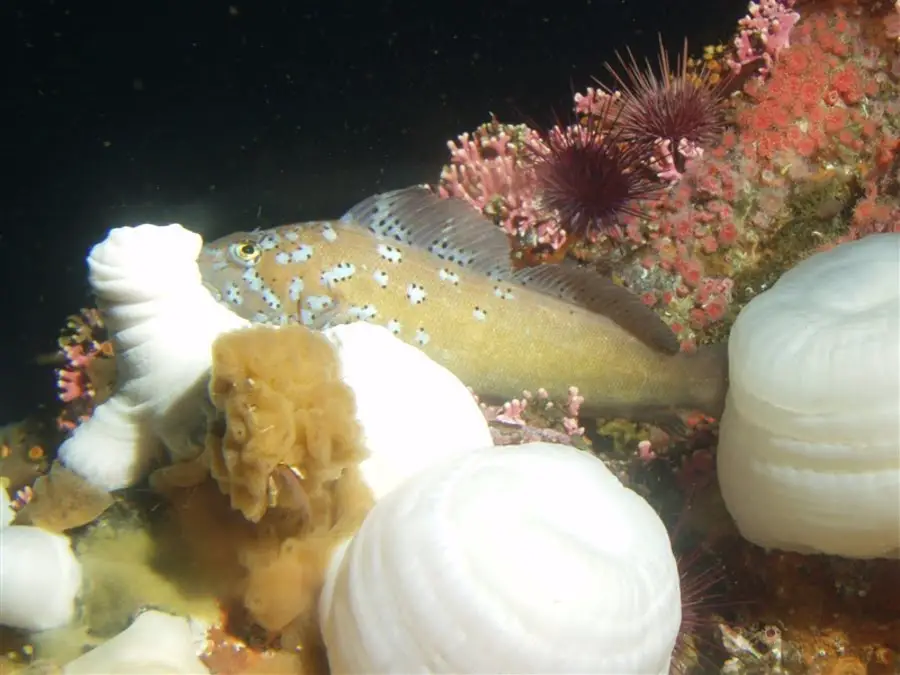
Best Practices for Preparing Kelp Greenling
Here are a few things to ensure that you get the best tasting meal from you Kelp Greenling as possible:
Firstly, select only the medium and smaller sized greenling to harvest, as the larger tend to taste fishier.
After you have harvested your kelp greenling, make sure to let out as much blood as possible by slicing the gills. This removes much of the unpleasant, “fishy” taste that causes it to be unappetizing.
Next you want to get the kelp greenling on ice as soon as possible. The longer the fish is unrefrigerated, the more fishy and soft the meat will get.
However, do not put your kelp greenling in the freezer, as the ice crystals that form tend to break up the meat and make it even more mushy.
In the case that you absolutely have to freeze your fish, you should follow common rules used with other mushy fish such as Spanish mackerel. Generally, you should vacuum seal and then freeze if possible.
For the best results, eat kelp greenling the day that you catch them. They tend not to keep very long and eating them right away will ensure that they are fresh and taste the cleanest.
How to Clean Kelp Greenling
Start by making a diagonal cut just behind the gill plate. This cut should go from top of the head to the pectoral fin and be angled inward towards the head.
Continue this cut along the bottom of the fish until you free the bottom portion of skin all the way to the tail.
Next make shallow cuts along the length of the fillet to separate the bottom of the fillet from the backbone. Once you reach the spine, return to the top of the first cut you made and continue it along the length of the body, just below the dorsal fin.
When you get to the tail, once again make small cuts that are flush with the backbone to separate the meat from the bone until you hit the spine. Now just make a single cut from the head down the spine to remove the entire fillet. Repeat for both sides.
To skin the filet, make a small cut between the meat and the skin at the tail end, and work your knife to lay flat between them.
Now pull the skin towards you as you push the knife away, remembering to keep it flat against the skin. Work down the fillet until all the skin is separated.
Now all that is left to do is remove the bones. To remove the rib bones, cut between the outside of the fillet and the ribs, then fold the meat up and cut around the rib bones. The section with the ribs can be used for soups and stocks.
To remove the pin bones, feel where they end with your finger and along either side of them until this point. Then connect your two cuts and remove the whole section. It should be long and thin with minimal meat still attached.
Always remember when you are cleaning a fish that it should be stored properly afterwards. If you don’t put your fish in a cold place to store, it could go bad quickly!
How to Cook Kelp Greenling
Kelp greenling can be cooked in a variety of ways to fit your preferences, as the neutral flavor lends itself to many styles of cuisine, however, due to the delicate meat, it is best to cook it gently if you want it to remain intact.
Kelp greenling is great fried, but deep frying can often lead to it breaking apart, so pan frying is a great option. Here’s a simple recipe to get you started:
- Season the kelp greenling fillets with salt and pepper.
- Lightly coat each fillet in flour.
- Heat the cooking oil of your choice in a large pan over medium-high heat.
- Place the coated fillets in the pan and cook for 3 to 4 minutes on each side, or until the fish is golden brown and cooked through.
This recipe is great on its own or to use as a base to add to.
If you want to season it more, you can go mild with spices like green onion, parsley, garlic, and citrus, or make the flavors bolder with spices like paprika, chili pepper, ginger, and cumin.
Conclusion
While eating kelp greenling may not be the most appealing to everyone, they certainly are worth a try if you end up reeling one in.
Just be sure to take the proper care once you harvest them by bleeding, refrigerating, and eating them as soon as possible to ensure that you get the best flavor from your catch. Hopefully you can be the proud cook of some delicious kelp greenling soon!

Growing up in Florida, I’ve been surrounded by saltwater my entire life…and I love sharing my passion with others.
To learn more about why I started Saltwater Mecca, visit the ABOUT page.
Thank you for reading this article. Browse around & have some fun!

